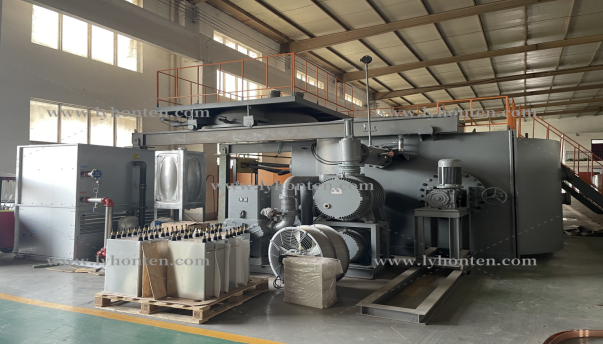
To isolate the induction melting process from the surrounding atmosphere and place it in a relatively effective vacuum, the melting furnace can be completely placed in a vacuum container (typically 10’Torr).
The electromagnetic stirring action combined with the vacuum can degas the metal and avoid oxidation during the melting or casting process. The casting has few inclusions and can be evenly distributed in the part. The material can be added during the melting process without worrying about oxidation reactions with the air, thereby accurately ensuring the reproducibility of the casting quality, ensuring high purity of metals and alloys, and high resistance to corrosion, fatigue and temperature stress damage.
Vacuum melting is more expensive and can only be used when special product properties are obtained at an increased cost. The time spent on vacuum generation and all operations in vacuum melting is longer than that of general melting. For example, charging and pouring in vacuum need to be carried out by remote control. Typical examples of vacuum melting are as follows:
- Nickel-based and cobalt-based superalloys (Nemolik, Atimet, Inconel, Vaspanu).
- Special steels (Manain steel, stainless steel, high-speed steel, etc.).
- High-purity metals (nickel, cobalt, uranium, beryllium).
- Basic metal alloys (copper-chromium, copper-titanium, iron-titanium, iron-chromium, iron-nickel)
- Materials with controlled expansion coefficients (Invar, Eurispa).
- High-purity magnetic materials (μ metal, iron-cobalt-vanadium alloy materials).
- Light and active metals (titanium, aluminum, zirconium).
If these alloys are not placed in the vacuum container before melting begins, then they must be charged from the outside. For this purpose, a charging lock is set up so that the alloy is charged after melting begins without the melt being exposed to the air. The charges are first loaded into a ladle and added to the melt at the appropriate time. Large vacuum furnaces are available (capacities of 300, 600, 2500, 4000 and 5000 kg steel).
Since the vacuum furnace tank itself is made of stainless steel, magnetic shielding is usually not required except for large furnaces. Vacuum furnaces are generally equipped with a mold interlock device that allows the mold to be prepared outside the vacuum container and then placed in the vacuum container after evacuation under closed conditions. This device, together with the charge lock device, allows the furnace to operate continuously without the need to frequently re-evacuate the melting chamber.